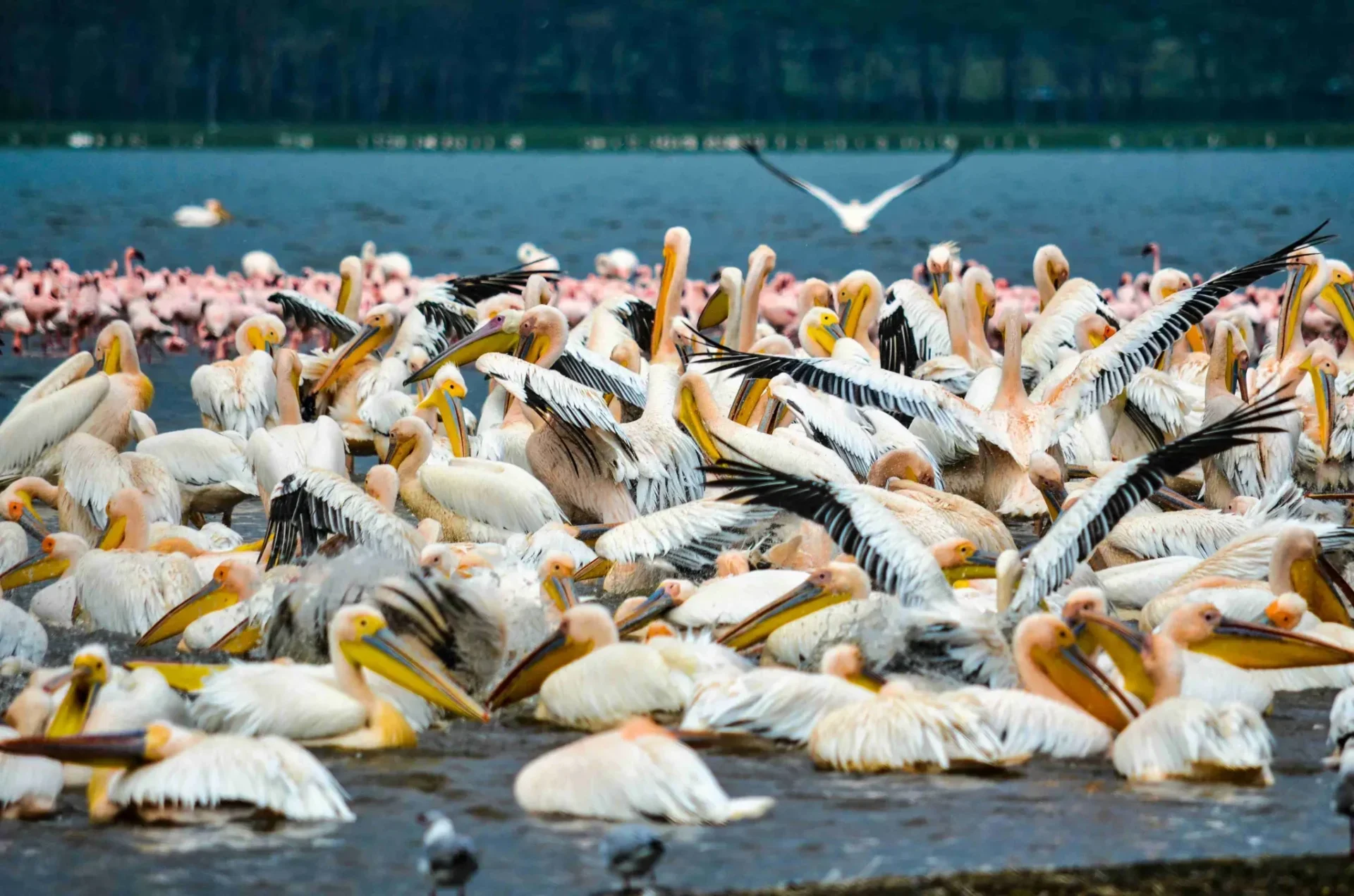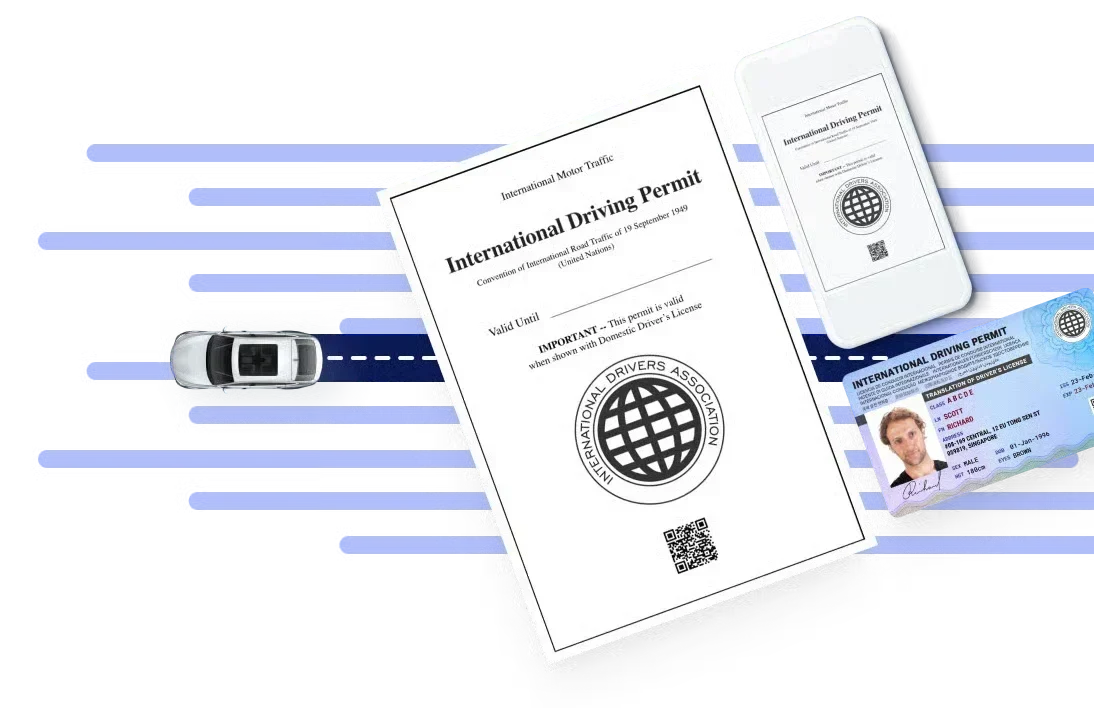When exploring the great outdoors, a few countries instantly come to mind, one of which is Kenya, a country in East Africa. A land of breathtaking landscapes and unparalleled wildlife and birdlife, Kenya offers a picturesque backdrop for an adrenaline-fueled adventure. With its diverse ecosystems, ranging from savannahs and lakes to mountains and forests, Kenya is a must-visit for outdoor enthusiasts looking for an adrenaline rush.
Whether you’re a seasoned adventurer or a natural lover, a road trip in Kenya promises an experience that will leave you spellbound. From the roaring lions of the Maasai Mara to the towering peaks of Mount Kenya, the country is a treasure trove of natural wonders waiting to be explored.
Planning a 5-day road trip in Kenya
To explore different road trip destinations in Kenya, you must be prepared with an itinerary and welcome spontaneity. Remember these necessary things: ensure your vehicle is in good driving condition, always bring essential supplies, and ensure you have a local guide or a reliable GPS.
Safety is a priority, so secure your accommodations and be mindful of local customs and wildlife guidelines. Pack for diverse weather conditions and be prepared for rough terrains. Don’t miss the opportunity to visit the Maasai Mara National Reserve, where you can witness the breathtaking Great Migration and explore the landscapes of Lake Nakuru, famous for its flamingo-filled waters and wildlife.
With these considerations in mind, you’re set for an unforgettable journey through one of Africa’s most stunning countries to discover what Kenya offers.
5-day Kenya road trip itinerary
Day 1: Nairobi to Maasai Mara
It’s time to explore Kenya and see how much it offers! Kickstart your adventure in Nairobi, Kenya’s capital and largest city, where markets and a rich cultural heritage await. From here, drive to the world-famous Maasai Mara Natural Reserve. It is famous for the annual Great Migration , where over 1.5 million wildebeest, zebras, and gazelles journey across the Mara River.
Aside from witnessing dramatic river crossings, you can also keep an eye out for crocodiles lying in wait, an unforgettable scene of nature at work. You can also embark on game drives, where the “Big Five” – lion, elephant, buffalo, leopard, and rhino – roam the savannah. The sight of a pride of lions lounging under an acacia tree or a cheetah sprinting across the plains can make you feel like you’re in the middle of a show on National Geographic. The Maasai Mara’s landscapes are also dotted with kopjes or rocky outcrops, providing panoramic grasslands and African sky views.
Consider staying in a tented camp for an authentic safari experience if you can. As you fall asleep to the distant roar of a lion or a symphony of bird calls, take in the sounds of the wild. This day sets the tone for an unforgettable journey into the heart of Kenya’s natural wonders.
Day 2: Maasai Mara to Lake Nakuru
On the second day, drive to Lake Nakuru National Park, a road trip destination for bird watchers and wildlife enthusiasts. As you approach the park, the sight of thousands of pink flamingos lining the shores of Lake Nakuru will take your breath away. Make sure you snap a photo as a souvenir! These birds create a beautiful contrast against the azure waters, offering a picture-perfect and mesmerizing sight.
Lake Nakuru is also considered a wildlife sanctuary. The park is known for its conservation efforts, particularly in protecting rhinos. Keep your eyes peeled for these creatures as they graze in the grasslands or wallow in the mud. You might also spot some lions and leopards, often stalking through the underbrush.
The park is surrounded by acacia forests and rolling grasslands, making it ripe for exploration. Drive up to the Baboon Cliff, where a view of the lake and the park’s ecosystems awaits. High up, this point is ideal for photographing the sweeping vistas and wildlife below.
Day 3: Lake Nakuru to Lake Naivasha
From Lake Nakuru, journey to Lake Naivasha, a freshwater gem nestled in the Great Rift Valley . Famous for its serene beauty, Lake Naivasha offers a tranquil escape with its clear waters and lush surroundings. As you arrive, hippos will greet you as they lounge in the shallows. You can also marvel at the hundreds of bird species, including the African fish eagle and kingfisher.
After taking in the beauty of your surroundings, elevate your adventure by taking a boat ride across the lake to Crescent Island Game Park. This hidden gem allows you to stroll alongside giraffes, zebras, and antelopes . Walking among wildlife is an experience you can’t miss and definitely one for the books! You’ll have a memorable visit to Crescent Island with no barriers between you and the creatures.
If your schedule permits, you can also make a side trip to the nearby Hell’s Gate National Park , inspired by the iconic landscapes of the well-loved film, “The Lion King.” It’s an ideal place for rock climbing, hiking, and cycling. As you navigate the park’s gorges, past towering cliffs and geothermal springs, you’ll appreciate its diverse terrain and breathtaking vistas.
Day 4: Lake Naivasha to Mount Kenya
Fresh from the high of exploring Lake Naivasha, you can continue your adventure to Mount Kenya, a UNESCO World Heritage site and Kenya’s second-highest peak . With its snow-capped peaks and lush slopes, this majestic mountain offers various outdoor activities that delight adventure-seekers and nature lovers.
Hikers and rock climbers will fall in love with Mount Kenya. The challenging trails, such as the Sirimon and Chogoria routes, will take you through diverse ecosystems ranging from bamboo forests to moorlands. As you ascend, you’ll see flora like the giant lobelia and the rare Mount Kenya buttercup. You might also spot elephants, buffaloes, and monkeys in their habitats, making every step you take a photo-worthy moment.
If you want to slow things down with a relaxed exploration, Mount Kenya National Park offers scenic drives and nature walks that allow you to savor the mountain’s landscapes. Relish the beauty of crystal-clear streams, cascading waterfalls, and pristine lakes. Bird watchers will also enjoy roaming the park, which is home to different bird species, including the Verreaux’s eagle and sunbird.
Whether you conquer the peaks or enjoy a leisurely walk, Mount Kenya offers an unforgettable experience that highlights the country’s natural beauty and diversity.
Day 5: Mount Kenya to Nairobi
Conclude your exhilarating road trip with a scenic drive back to Nairobi, but only after experiencing the remarkable Ol Pejeta Conservancy near Mount Kenya. This conservancy is a must-visit, offering a unique blend of conservation and adventure . Home to the largest population of black rhinos in East Africa, Ol Pejeta provides a rare opportunity to see these magnificent creatures up close in their natural habitat.
One of the highlights of Ol Pejeta is the Sweetwaters Chimpanzee Sanctuary, a haven for orphaned and rescued chimpanzees. Here, you can learn more about these intelligent primates and the conservation efforts dedicated to their protection. Watching the chimpanzees interact and play adds a heartwarming touch to your visit.
As you drive back to Nairobi, reflect on your incredible journey. Each road trip destination offered its unique charm and taste of adventure, making your road trip in Kenya a genuinely unforgettable experience. Kenya’s ecosystems and commitment to conservation make it a top road trip destination for outdoor enthusiasts and nature lovers alike.
Into the Wild and Back: Concluding Your Road Trip in Kenya
As your road trip through Kenya ends, you won’t soon forget the thrilling wildlife encounters and picture-perfect landscapes you’ve witnessed. From the roaring lions of the Maasari Mara to the tranquil beauty of Lake Naivasha and the majestic peaks of Mount Kenya, every stop has showcased the country’s natural beauty and diversity.
The best part? More places and adventures await you! You can always return to the wonders of Kenya and spend an even longer time in this country on your next visit. Kenya’s ecosystems and commitment to conservation help ensure it will remain a premier destination for travelers. May your road trip to Kenya be just the beginning of exploring the great outdoors.
What You Need to Know About Driving in Kenya:
– For a hassle-free road trip in Kenya, driving your own rental car is best. To do this, you must secure your International Drivers Permit (IDP) , which translates your driver’s license into a language your destination country understands.
– Kenya follows strict laws when it comes to parking. Make sure you park in designated parking spots and bays to avoid incurring a fine.
– Don’t drink and drive! Kenyan authorities do breathalyzer driving tests on suspected drivers, and refusing to comply is against the law.
– Follow the speed limits as violating these makes you liable to fines of up to 100Ksh.
– Kenya has numerous roundabouts so stay alert on the road. Keep an eye out for directional signs as you approach roundabouts and make sure you use the correct lane.
– Following the practice of other African countries, in Kenya, driving is on the left-hand side .
– Reduce your speed at checkpoints. Kenya has police and sobriety checkpoints to make sure you are safe and legally driving. Always prepare your documents for checking, including your IDP.
– You may encounter animals on the road if you’re driving out of the city. When you encounter animals, reduce your speed and leave room for them to pass.
Frequently Asked Questions (FAQs):
Do you need a visa when visiting Kenya?
When visiting another country, always check if you need a visa. You can apply for an e-visa before your trip, which is easier to use online. Always keep a printed copy of your e-visa with you.
Is Kenya a safe country to visit?
Malaria is prevalent in many parts of Kenya. Consult with a doctor before your trip, and make sure you take antimalarial medication. Use mosquito nets at night and apply mosquito repellents.
What is the national language of Kenya?
The national language of Kenya is Swahili (Kiswahili). Swahili is widely spoken and used in various aspects of daily life, including education, government, and media. Make sure you learn a few basic phrases before your trip, such as “Jambo” (Hello) or “Asante” (Thank you), which locals will surely appreciate.
When is the best time to visit Kenya?
The best time to visit Kenya depends on the activities you plan to do in the country. For outdoor activities like safaris and wildlife viewing, it’s best to travel between July and October as it’s considered the time to catch the Great Migration in the Maasai Mara. Meanwhile, those looking into climbing Mount Kenya may want to visit between January and February.
Is it safe to drink water in Kenya?
Stock up on bottled water! Only drink bottled or treated water, and use bottled water when brushing your teeth.
Can you rent a car in Kenya?
Yes! Most car rental companies are located in Nairobi. Do your research and look into different companies so you can compare prices, customer reviews, company policies, and the condition of the vehicles. Some of the car rental companies in Kenya include Kenya Car Hire Services, Porto Car Hire Kenya, Nairobi Car Hire Services, and Elite Car Rental.
What are things to remember when going around the country and visiting parks?
Kenya has a strict ban on single-use plastics in all protected areas. To avoid hefty fines, bring reusable bottles and shopping bags.
Can you take photos of local communities, people, and their homes?
Always ask for permission before photographing locals to show your respect and acknowledgment of their dignity.







